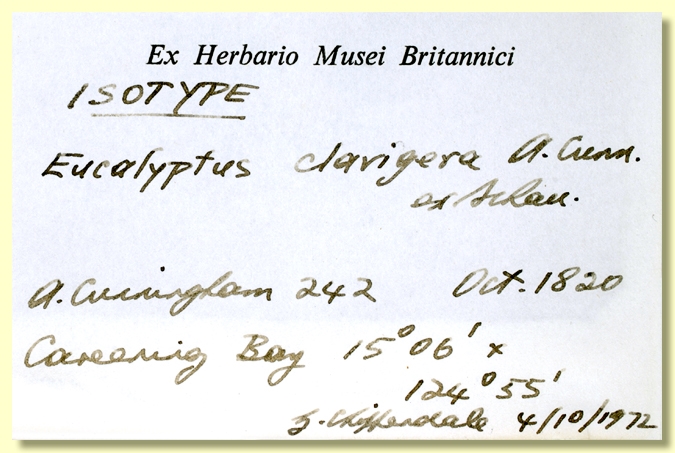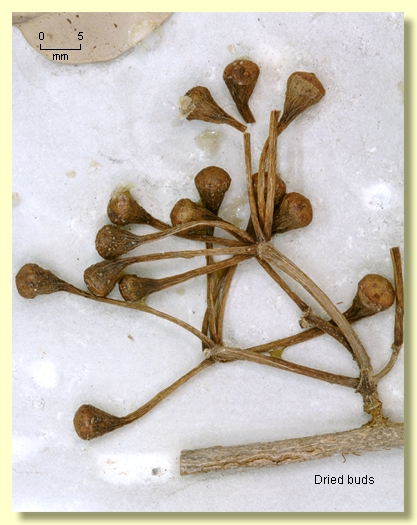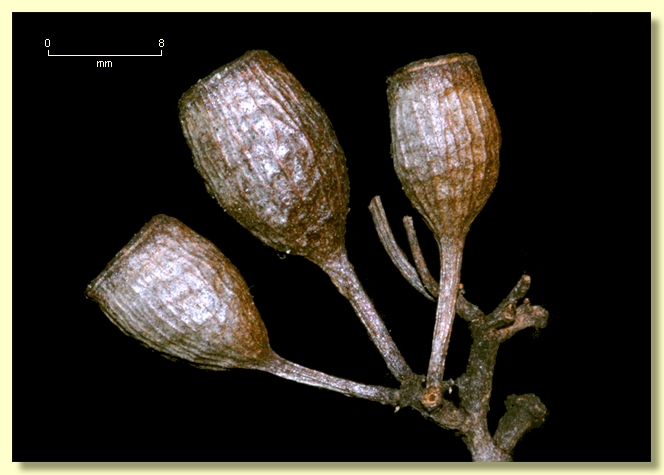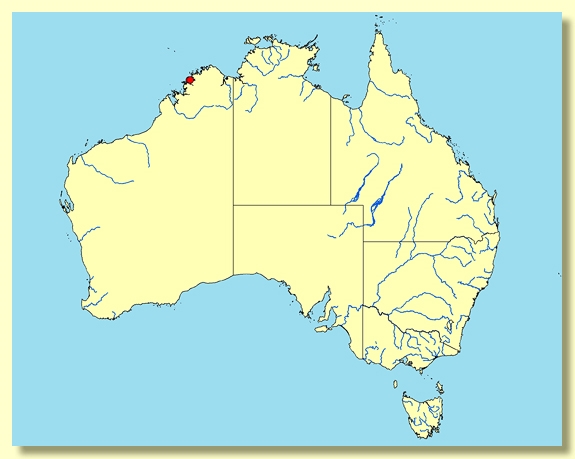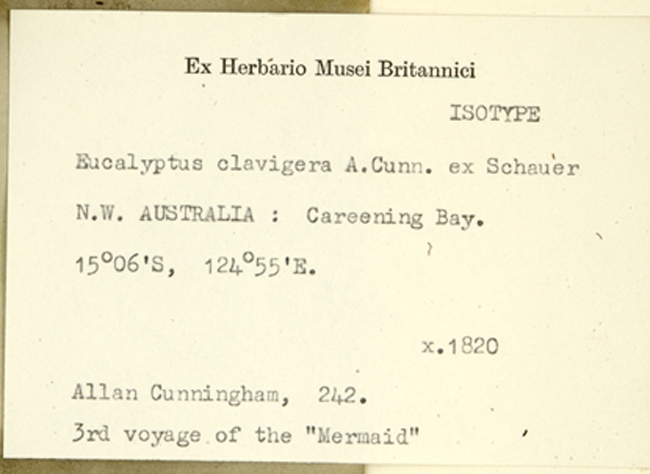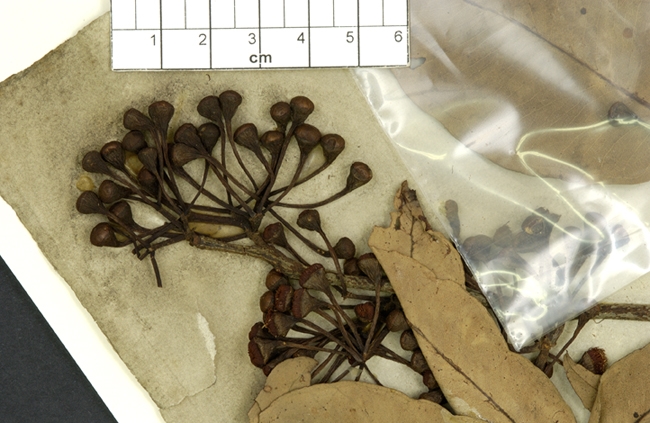Corymbia | Blakearia
Euclid - Online edition
Corymbia clavigera
Corymbia clavigera (A.Cunn.ex Schauer) K.D.Hill & L.A.S.Johnson, Telopea 6: 413 (1995).
Tree to 5(15) m tall. Probably forming a lignotuber.
Bark smooth pale grey and white over all or most of trunk, sometimes partly rough, thin and irregularly flaky-tessellated on lower trunk.
Branchlets lack oil glands in the pith; smooth (not scabrid).
Juvenile growth (coppice or field seedlings to 50 cm): not seen.
Crown predominantly of alternate adult leaves, with few pairs opposite.
Adult leaves alternate, petioles 1–2.2 cm long; blade lanceolate or elliptical, 7–16 cm long, 1.4–2.5 cm wide, flat or slightly undulate, base tapering to petiole, margin entire or irregularly indented, apex pointed, concolorous, dull (fide Hill & Johnson 1995, p. 413), green, side-veins at less than or greater than 45° to midrib, reticulation dense to ?very dense, intramarginal vein present, oil glands obscure.
Inflorescence axillary compound, with rhachis having a basal internode about 0.6 cm long and sometimes a second shorter internode, peduncles variable within an inflorescence, 0–1.4 cm long, buds 3 or 7 per umbel, pedicels 0.8–1.7 cm long. Mature buds obovoid to pyriform (ca 0.7 cm long, 0.4 cm wide), smooth, scar present (outer operculum shed early), operculum shallowly rounded, stamens inflexed, all fertile, anthers oblong, dorsifixed, versatile, dehiscing by longitudinal slits, style long and straight, stigma ± blunt, locules 3, ovules not arranged in distinct vertical rows on the placentae. Flowers white.
Fruit pedicellate (pedicels 0.9–1.7 cm long), urceolate to barrel-shaped, 0.7–0.9 cm wide, 0.9–1.4 cm long, thin-walled, disc descending, valves 3, enclosed.
Seeds not seen.
Cultivated seedlings (measured at ca node 10): not grown.
Flowering has been recorded in October (specimen Cunningham 242) and in June (specimen Kenneally 9000).
A ghost gum tree apparently of very restricted distribution in the north-western Kimberley region of Western Australia. Known with certainty only from the type locality at remote Careening Bay where it was collected in 1820 by Alan Cunningham during the voyage of the "Mermaid", and re-collected in 1984 by Kevin Kenneally "on basalt slope behind the beach". It is likely also to be found on some off-shore islands and possibly on areas of Carson River volcanics between Port Warrender and the Mitchell Plateau. Corymbia clavigera is essentially smooth-barked, sometimes with persistent thin rough bark on lower trunk, has a crown of glabrous lanceolate-elliptic dull green leaves and axillary compound inflorescences expanded with a basal internode always obvious and a second internode sometimes clearly present with peduncles 0–1.4 cm long. The inflorescences seem to develop in the axils of the previous year's leaves (now fallen) and can thus appear to be ramiflorous. Buds have pedicels 0.8–1.7 cm long. Fruit are typically thin-walled ghost gum type, ± barrel-shaped in outline or contracted below the top to appear urn-shaped.
The relationship of C. clavigera to other ghost gums is not well known since few quality specimens exist. It has some similarities with the sandstone dwelling C. kombolgiensis from the Arnhem Land in the Northern Territory, however, it differs from that species in the more expanded inflorescence and dull, not glossy crown leaves. In the Kimberley region other ghost gums similar to C. clavigera are: C. torta which has a condensed inflorescence, and C. paractia which differs in having some setose intermediate leaves in the otherwise lanceolate to elliptic-leaved adult crown, more tumbledown habit, and habitat on red sand at the rear of coastal dunes.
MORE ABOUT CORYMBIA
MORE ABOUT GHOST GUMS


